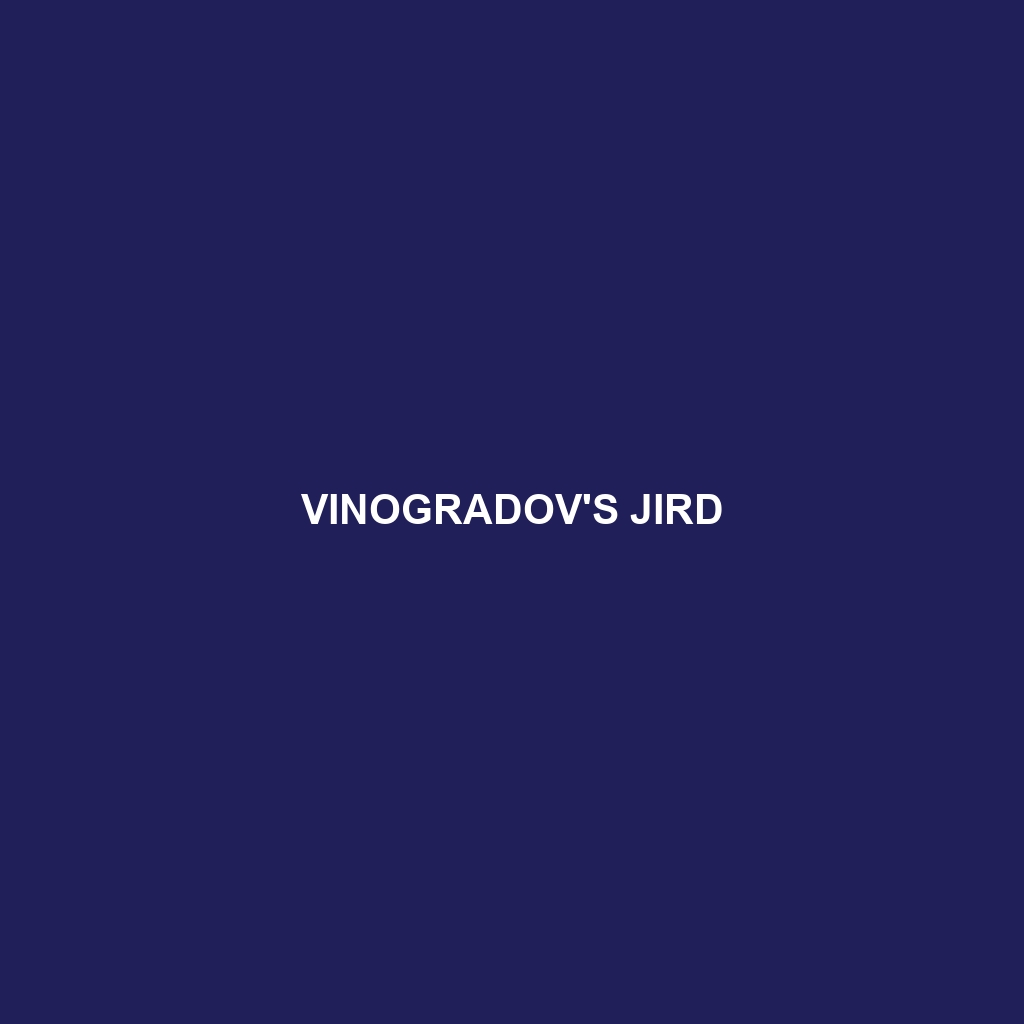Vinogradov’s Jird: A Comprehensive Species Description
Common Name: Vinogradov’s Jird
Scientific Name: Meriones vinogradovi
Habitat
Vinogradov’s Jird is primarily found in the arid regions of Central Asia, specifically in countries such as Kazakhstan, Turkmenistan, and Uzbekistan. This species inhabits sandy and rocky deserts, favoring areas with sparse vegetation where it can burrow and find shelter. These habitats are characterized by extreme temperatures, making them ideal for the adaptability of the Vinogradov’s Jird.
Physical Characteristics
Vinogradov’s Jird is a medium-sized rodent, typically weighing between 80 to 130 grams. Its body length ranges from 15 to 25 centimeters, with an additional tail length that can reach up to 30 centimeters. The fur is generally sandy-brown, blending seamlessly with its desert surroundings, while its underbelly is a lighter shade. Distinctive features include large, expressive eyes and long, tufted ears that enhance its hearing capabilities, allowing it to detect predators from afar.
Behavior
Vinogradov’s Jird is primarily nocturnal, emerging at dusk to forage for food. These creatures are known for their remarkable burrowing skills, often creating extensive tunnel systems to escape the desert heat during the day. Socially, they tend to be quite solitary, although they may form small colonies during the breeding season. They exhibit agile movements and are adept at climbing and jumping, which helps them evade predators.
Diet
The diet of Vinogradov’s Jird consists mainly of seeds, grains, and occasional insects. They are opportunistic feeders, foraging for food that is available in their harsh environment. Their ability to store food in their burrows is crucial for survival during periods of scarcity, highlighting their adaptability and resourcefulness.
Reproduction
Vinogradov’s Jird typically breeds during the warmer months, with a breeding season ranging from late spring to early summer. The gestation period lasts about 24-26 days, after which the female gives birth to a litter of 3 to 8 young. These offspring are altricial at birth, relying heavily on their mother for nourishment and protection until they are weaned and able to explore their surroundings.
Conservation Status
The current conservation status of Vinogradov’s Jird is classified as Vulnerable according to the International Union for Conservation of Nature (IUCN). Factors contributing to this status include habitat loss due to agricultural expansion and urban development, coupled with climate change impacts that threaten their desert ecosystems.
Interesting Facts
Did you know that Vinogradov’s Jird can jump distances up to three times its body length? This impressive ability not only aids in escaping predators but also enables it to navigate through the challenging terrain of its habitat. Additionally, these jirds have a specialized ability to conserve water, allowing them to thrive in arid conditions where moisture is scarce.
Role in Ecosystem
Vinogradov’s Jird plays a crucial role in its ecosystem as both a prey and a seed disperser. By feeding on a variety of plants and seeds, it helps in maintaining the health of the desert flora. Its burrowing behavior aerates the soil, which benefits plant growth and contributes to the overall stability of the desert habitat. Furthermore, the jird serves as an important food source for various predators, including foxes and birds of prey, thus sustaining the ecological balance.
This HTML formatted species description is designed to be SEO-optimized, engaging, and informative for readers interested in learning about Vinogradov’s Jird.
